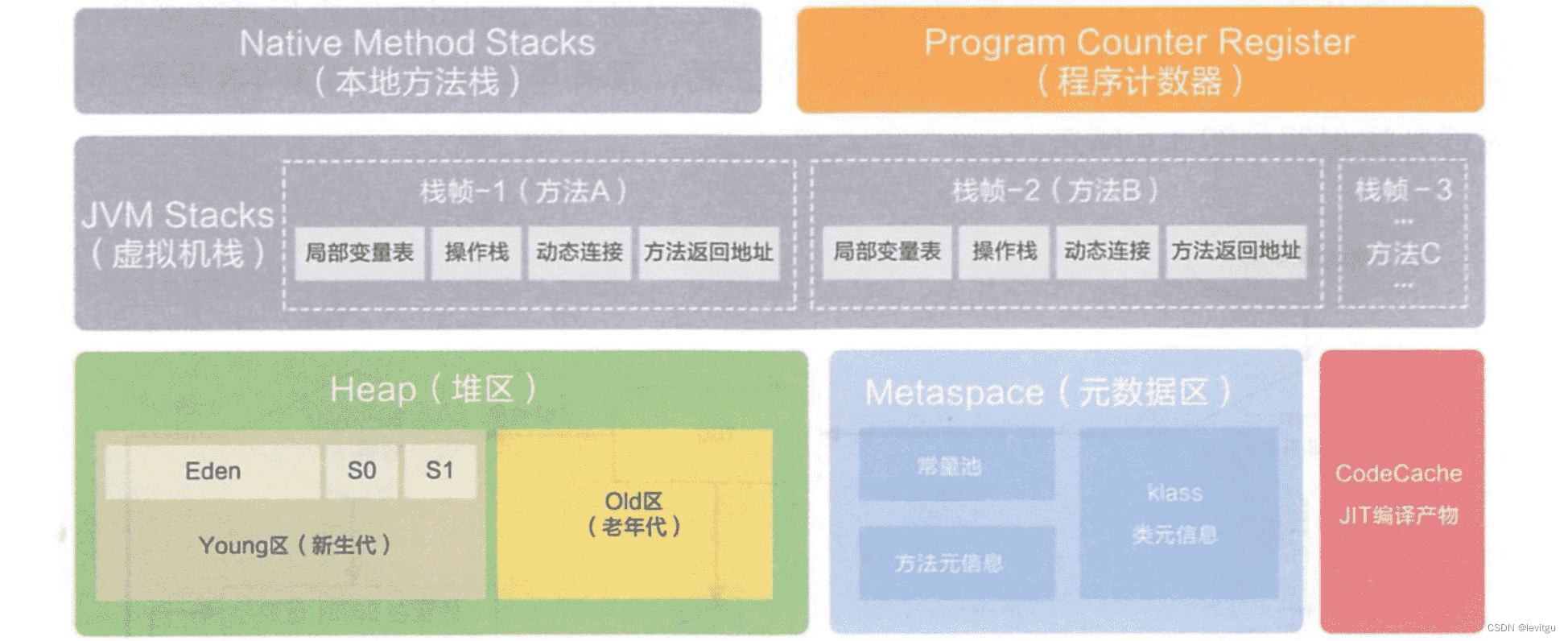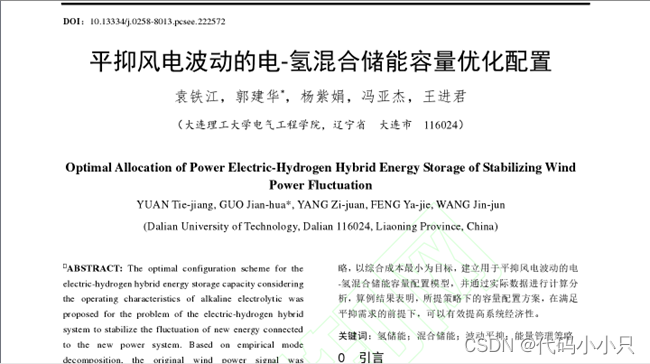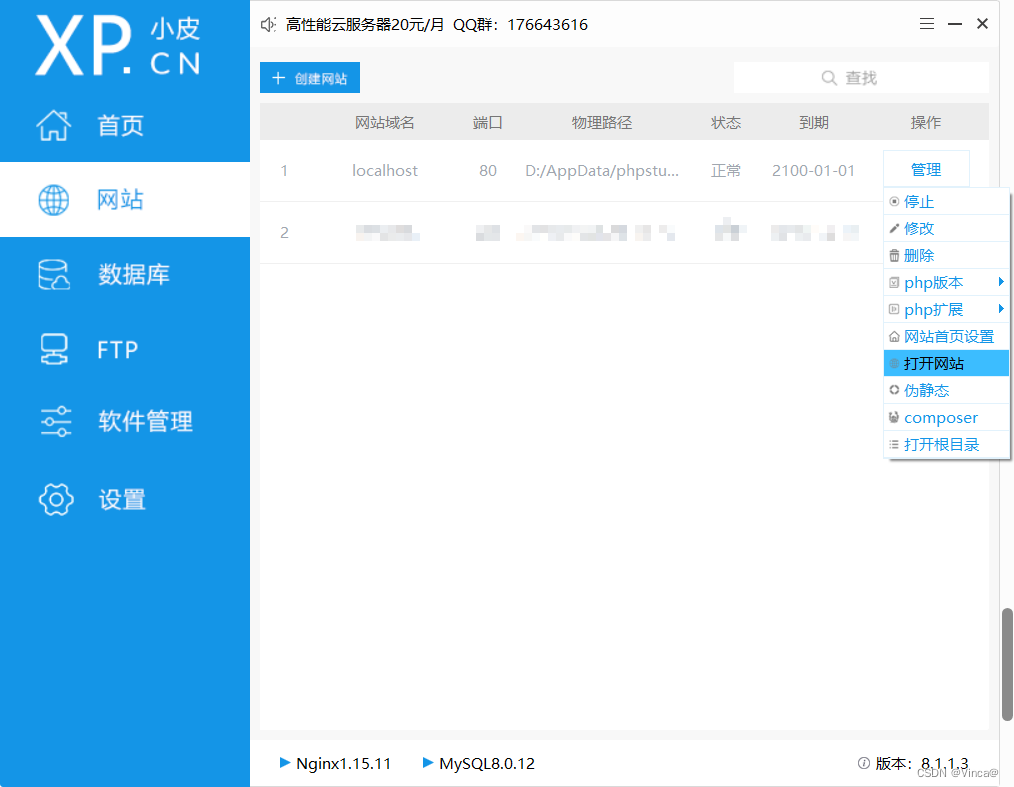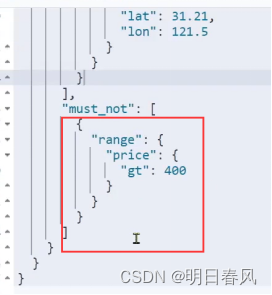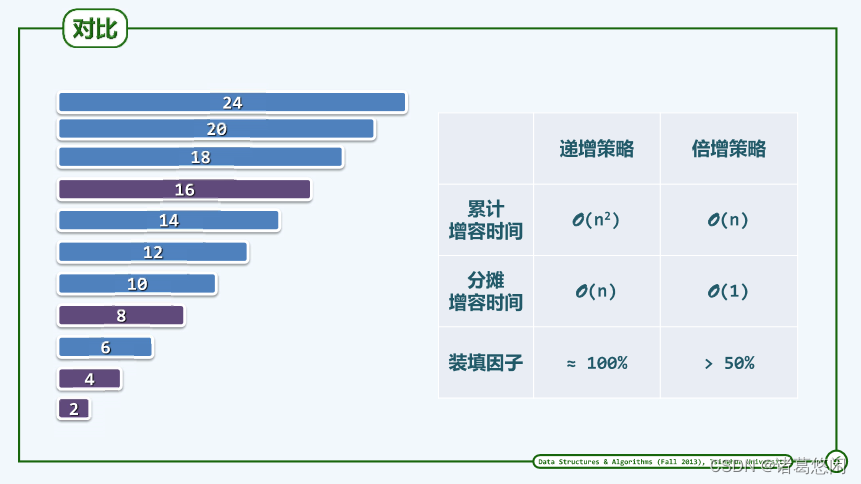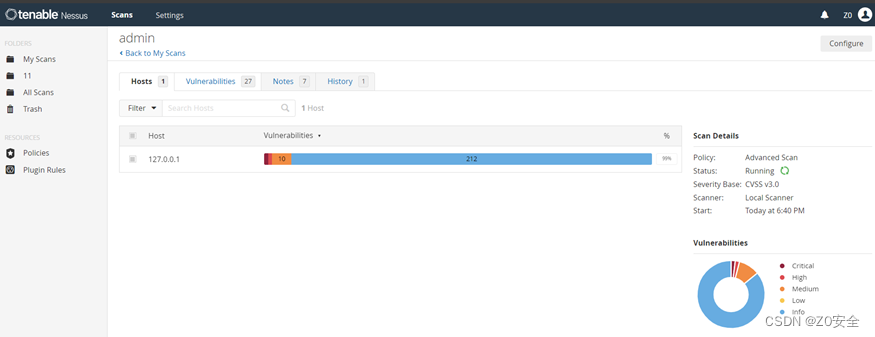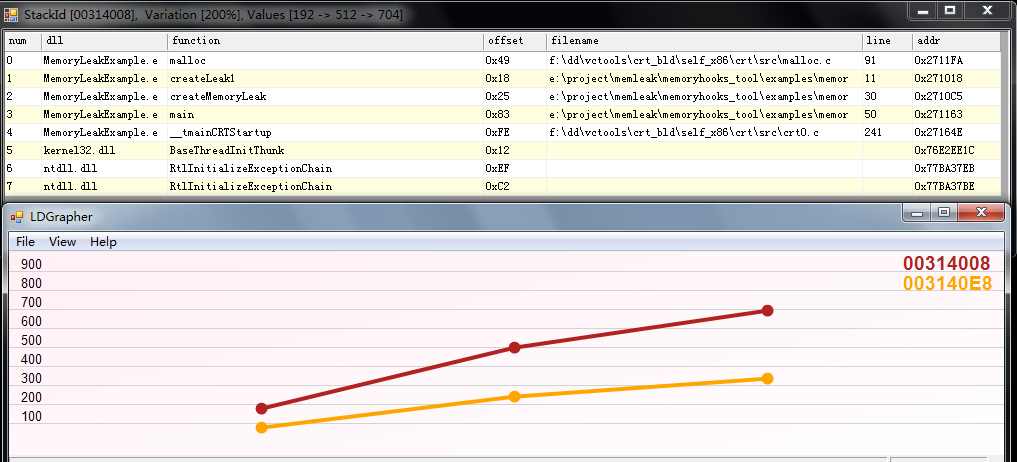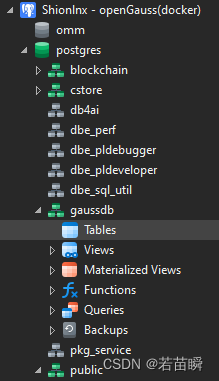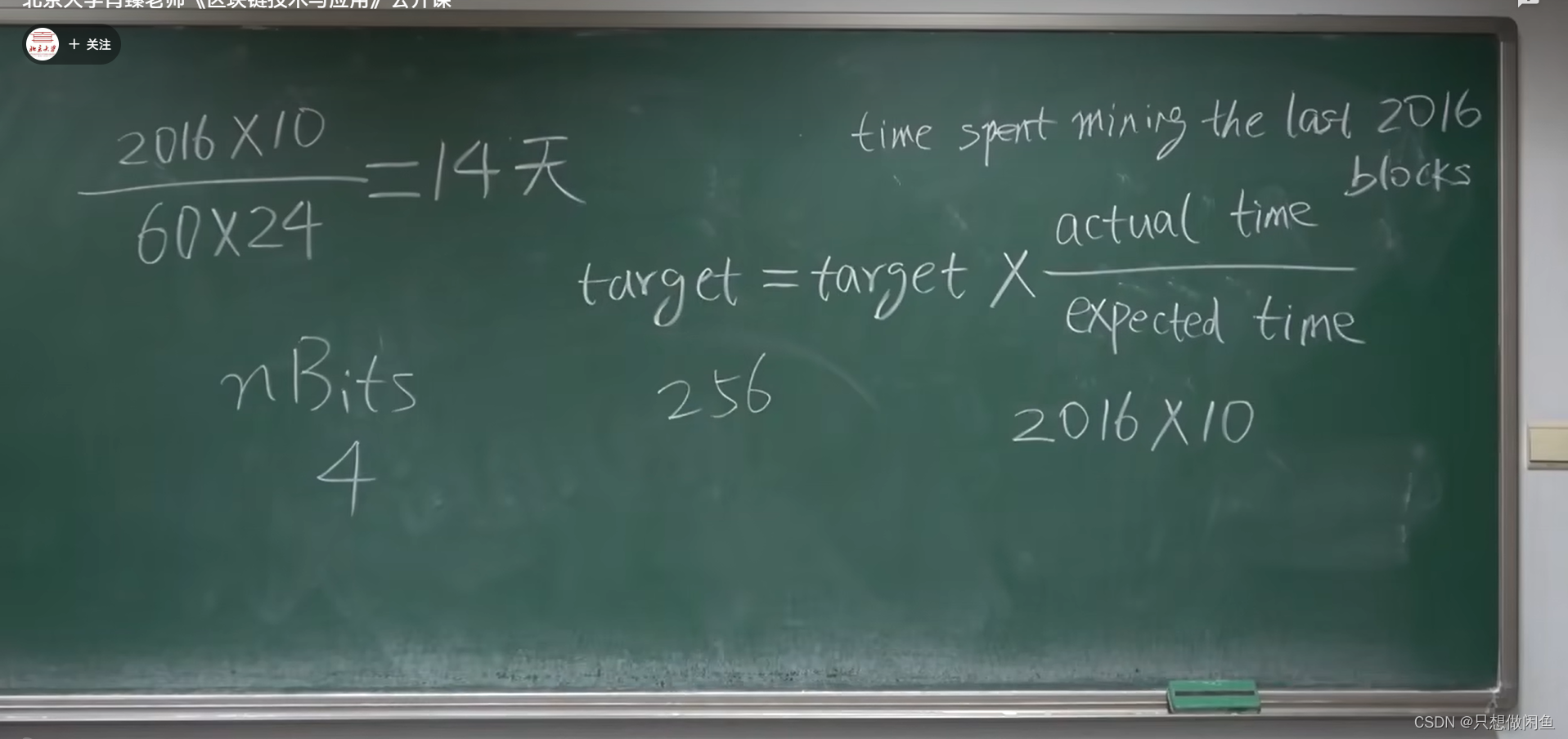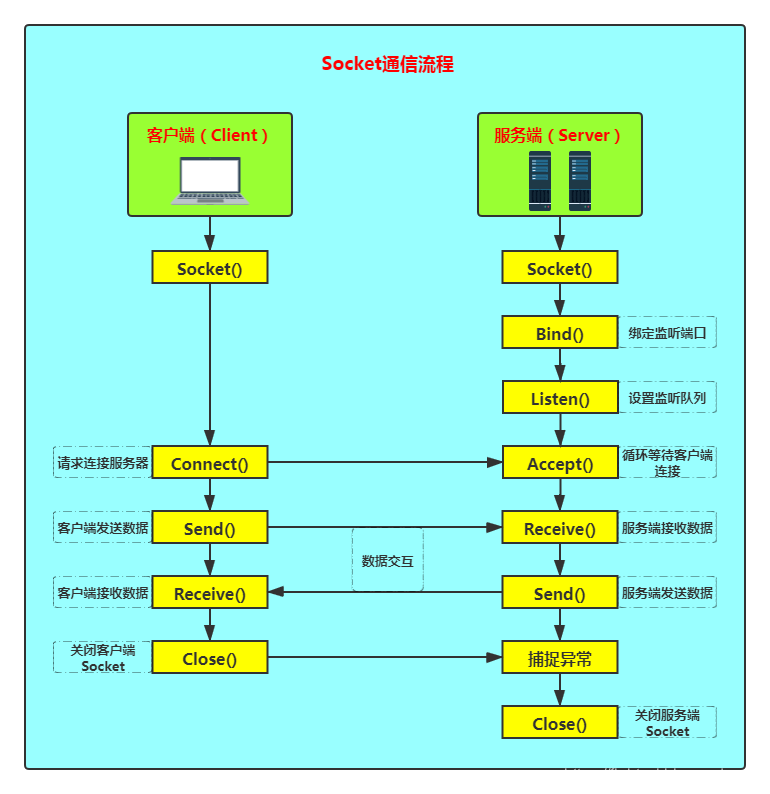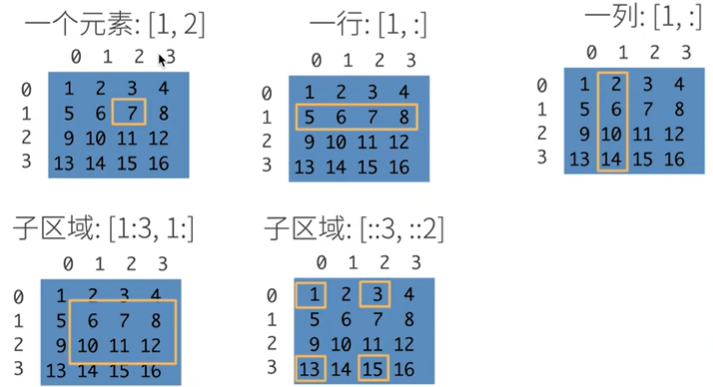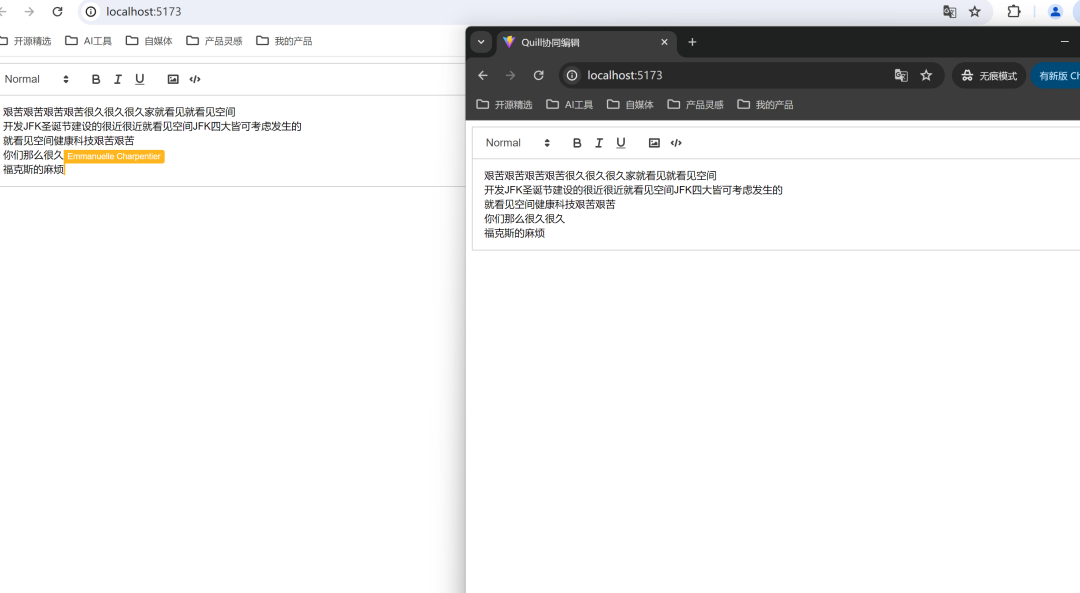使用入门
视频链接
【手把手带你刷Leetcode力扣|各个击破数据结构和算法|大厂面试必备技能【已完结】-哔哩哔哩】 https://b23.tv/vIcRT61
时空复杂度
时间: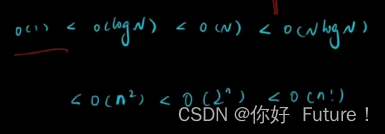
空间:主要有O(1)和O(n)两种,只用计算开辟的内存,若数组当做参数传进来了,不用计算数组的空间
数组
特点:适合读多写少
操作
- 创建数组
- 添加元素(追加元素在列表末端,时:O(1),否则为O(n))
- 访问元素(时:O(1))
- 修改元素(时:O(1))
- 删除元素
- 遍历数组
- 查找元素
- 数组长度
- 数组排序
相关习题
补充
在Python中,self参数是一个约定俗成的参数名,用于表示对象自身。它通常作为方法的第一个参数,用于引用当前正在调用该方法的对象。
class Person:
def _init_(self, name):
self.name = name
def introduce(self):
print("My name is {self.name}.")
person = Person("Tom")
person.introduce()My name is Tom.485. 最大连续 1 的个数
. - 力扣(LeetCode)
测试部分用例对了,还未找到错因
def findMaxConsecutiveOnes(nums):
"""
:type nums: List[int]
:rtype: int
"""
# 遍历列表,遍历到列表中的元素为1时:当前计数+1;碰到0时:将当前计数与最大计数对比,若当前计数大,则将当前计数覆盖最大计数,然后将当前计数归0,如此往复,最后返回当前计数和最大计数中的最大值(当列表最后一个元素为1时,也需要对比当前计数和最大计数)
now_count = 0 # 当前计数
final_count = 0 # 最大计数
for i in range(len(nums)):
if nums[i] == 1 :
now_count += 1
else:
final_count = max(final_count, now_count)
now_count = 0
return max(final_count, now_count)
nums = [1,0,1,1,0,1]
print(findMaxConsecutiveOnes(nums))2时:O(n)
空:O(1)
283. 移动零
. - 力扣(LeetCode)
def moveZeroes(nums):
"""
:type nums: List[int]
:rtype: None Do not return anything, modify nums in-place instead.
"""
# 特殊指针法,当前指针遍历列表,若当前指针遍历到非零元素,则将非零元素向前覆盖,然后继续往后遍历;若遍历到0元素,则计数加1。
count = 0 # 计数,记录0元素个数,用于计算覆盖元素的位置
for i in range(0,len(nums)):
if nums[i] != 0:
# 元素向前覆盖
nums[i - count] = nums[i]
else:
count += 1
# 后面元素覆0值
for i in range(0, count):
nums[len(nums) - 1 - i] = 0
return nums
nums = [0,1,0,3,12]
print(moveZeroes(nums))[1, 3, 12, 0, 0]易错点:(这个-1一定别忘了,假如此时count=1,代表只有一个0被覆盖了,此时应当是nums[len(nums) - 1] = 0)
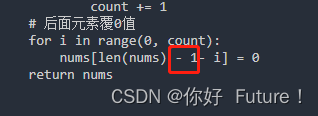
时:O(n)
空:O(1)
27. 移除元素
. - 力扣(LeetCode)
def removeElement(nums, val):
"""
:type nums: List[int]
:type val: int
:rtype: int
"""
# 特殊指针法,当前指针遍历列表,若当前指针遍历到非val元素,则将非零元素向前覆盖,然后继续往后遍历;若遍历到val元素,则计数加1。
count = 0 # 计数,记录val元素个数,用于计算覆盖元素的位置
for i in range(0,len(nums)):
if nums[i] != val:
# 元素向前覆盖
nums[i - count] = nums[i]
else:
count += 1
# 后面元素删除
for i in range(0, count):
nums.pop()
return nums
nums = [3,2,2,3]
print(removeElement(nums, 3))
print(len(nums))[2, 2]
2时:O(n)
空:O(1)
链表
相关习题
203.移除链表元素
. - 力扣(LeetCode)
struct ListNode* removeElements(struct ListNode* head, int val) {
// 头结点单独处理
while(head != NULL && head->val == val){
head = head->next;
}
if (NULL == head){
return head;
}
struct ListNode *pre = head, *temp;
while(pre->next != NULL){
if(pre->next->val == val){ //该元素需要删除
temp = pre->next;
pre->next = temp->next;
free(temp);
}else{
pre = pre->next;
}
}
if(pre->val == val){
free(pre);
}
return head;
}时:O(n)
空:O(1)
206.反转链表
. - 力扣(LeetCode)
struct ListNode* reverseList(struct ListNode* head) {
if(head == NULL){
return head;
}
// p用来遍历单链表,r是为了防止断链
struct ListNode *p = head->next, *r;
head->next = NULL;
while( p != NULL){
r = p->next;
// 头插法将元素插入
p->next = head;
head = p;
p = r;
}
return head;
}时:O(n)
空:O(1)
2
/**
* Definition for singly-linked list.
* struct ListNode {
* int val;
* struct ListNode *next;
* };
*/
int power(int x, int n) { //该函数用于实现计算x次幂,那么之后求n-1、n-2...次幂都可以用了
while (n != 1) {
return x*power(x, n - 1);
}
if (n == 1) {
return x;
}
}
struct ListNode* addTwoNumbers(struct ListNode* l1, struct ListNode* l2) {
/*
算法思想:
(1)用两个指针p、q分别遍历两个单链表,将p所指结点的数据一一加和到countl1中。
(2)遍历第二个单链表,将q所指结点数据加和countl1到count中,
(3)q在遍历期间,首先判断是否会进位,然后将count%10,count/10得到的数据覆盖链表l1的数据,为防止l1链表长度不够,还需要票判断链表是否为空(最后返回l1的数据)
*/
struct ListNode *p = l1, *q = l2; //p、q分别用来遍历l1、l2
int countl1 = 0, count = 0;
int i = 0;
while(p != NULL){ //遍历第一个单链表
countl1 += (p->val * power(10, i));
p = p->next;
i++;
}
i = 0;
int insertdata = 0,prepose = 0; //insertdata是将要插入链表的数据,prepose控制进位
p = l1;
while(q != NULL){
insertdata = countl1%10 + q->val;
if(insertdata >= 10){ //需要进位
insertdata /= 10;
p->val = insertdata + prepose;
prepose = 1;
}else{ //不需要进位
p->val = insertdata + prepose;
prepose = 0;
}
p = p->next;
q = q->next;
countl1 /= 10;
}
return l1;
}#include<iostream>
#include<cmath>
#include<cstddef>
using namespace std;
struct ListNode {
int val;
ListNode* next;
ListNode(int value) : val(value), next(nullptr) {}
};
ListNode* createSList(int* nums, int sz) {
ListNode* head = nullptr;
ListNode* tail = nullptr;
for (int i = 0; i < sz; ++i) {
ListNode* newNode = new ListNode(nums[i]);
if (tail == nullptr) {
head = tail = newNode;
} else {
tail->next = newNode;
tail = newNode;
}
}
return head;
}
void destroySList(ListNode* head) {
while (head != nullptr) {
ListNode* temp = head;
head = head->next;
delete temp;
}
}
int main() {
int arr[] = {1, 2, 3, 4, 5, 6};
int sz = sizeof(arr) / sizeof(arr[0]);
ListNode* plist = createSList(arr, sz);
// 在程序结束前释放链表占用的内存
destroySList(plist);
return 0;
}
ListNode* addTwoNumbers(ListNode* l1, ListNode* l2) {
/*
算法思想:
(1)用两个指针p、q分别遍历两个单链表,将p所指结点的数据一一加和到countl1中。
(2)遍历第二个单链表,将q所指结点数据加和countl1到count中,
(3)q在遍历期间,首先判断是否会进位,然后将count%10,count/10得到的数据覆盖链表l1的数据,为防止l1链表长度不够,还需要票判断链表是否为空(最后返回l1的数据)
*/
struct ListNode *p = l1, *q = l2; //p、q分别用来遍历l1、l2
int countl1 = 0, count = 0;
int i = 0;
while(p != NULL){ //遍历第一个单链表
countl1 += (p->val * pow(10, i));
p = p->next;
i++;
}
i = 0;
int insertdata = 0,prepose = 0; //insertdata是将要插入链表的数据,prepose控制进位
p = l1;
while(q != NULL){
insertdata = countl1%10 + q->val;
if(insertdata >= 10){ //需要进位
insertdata /= 10;
p->val = insertdata + prepose;
prepose = 1;
}else{ //不需要进位
p->val = insertdata + prepose;
prepose = 0;
}
p = p->next;
q = q->next;
countl1 /= 10;
}
return l1;
}
